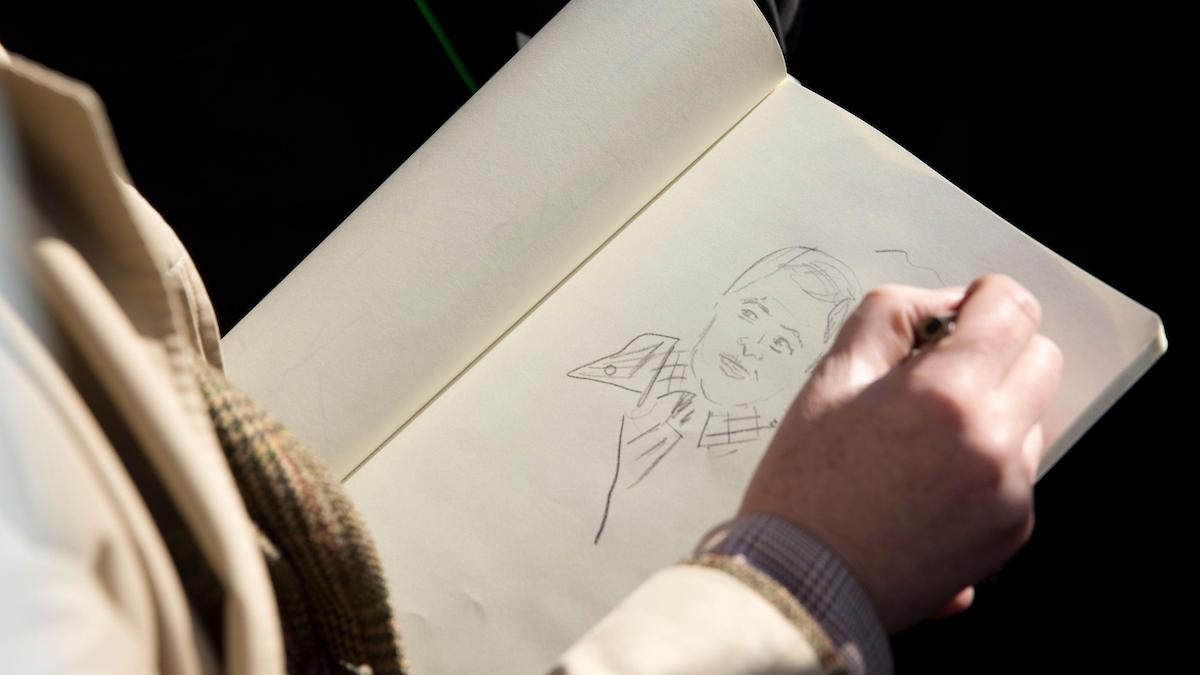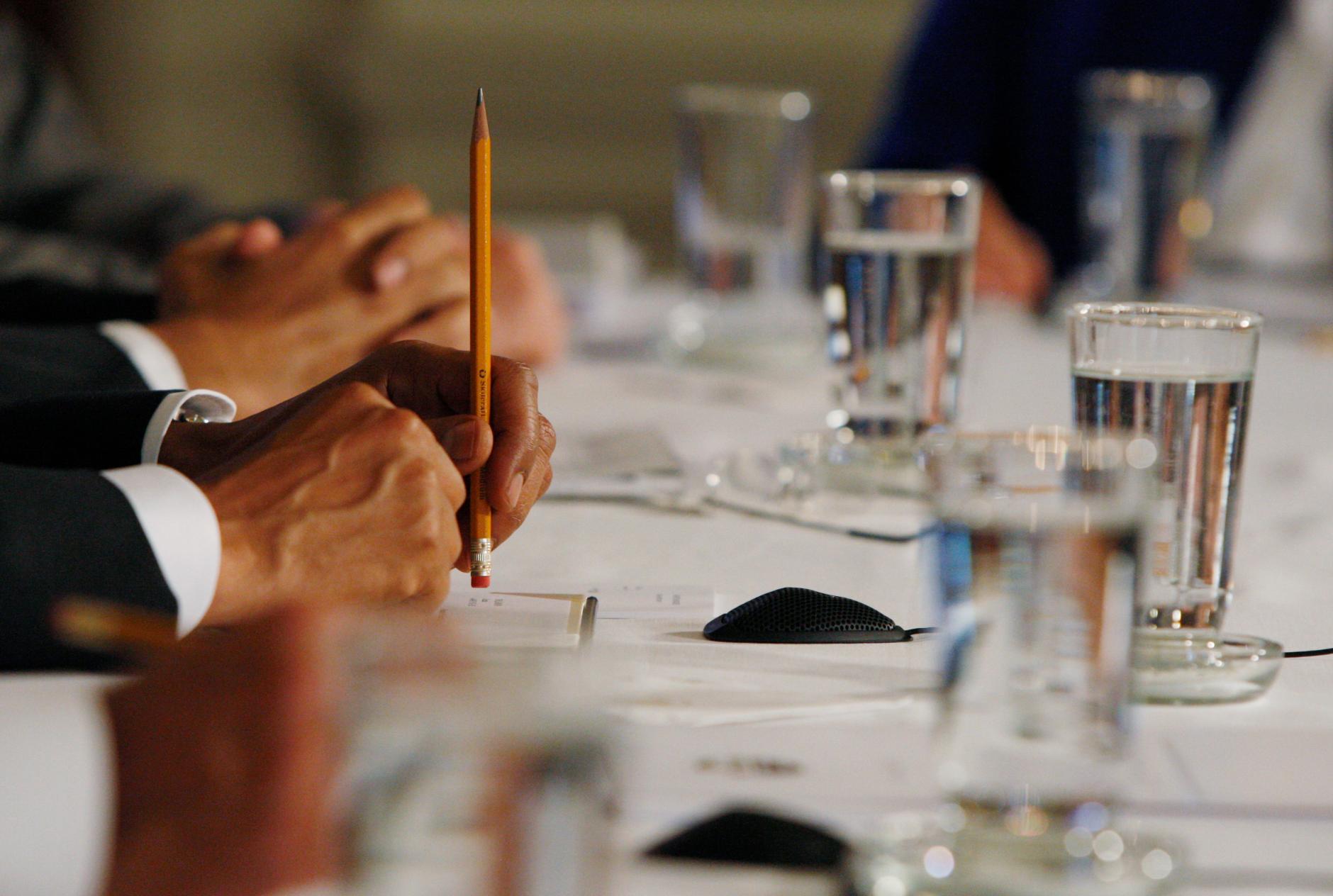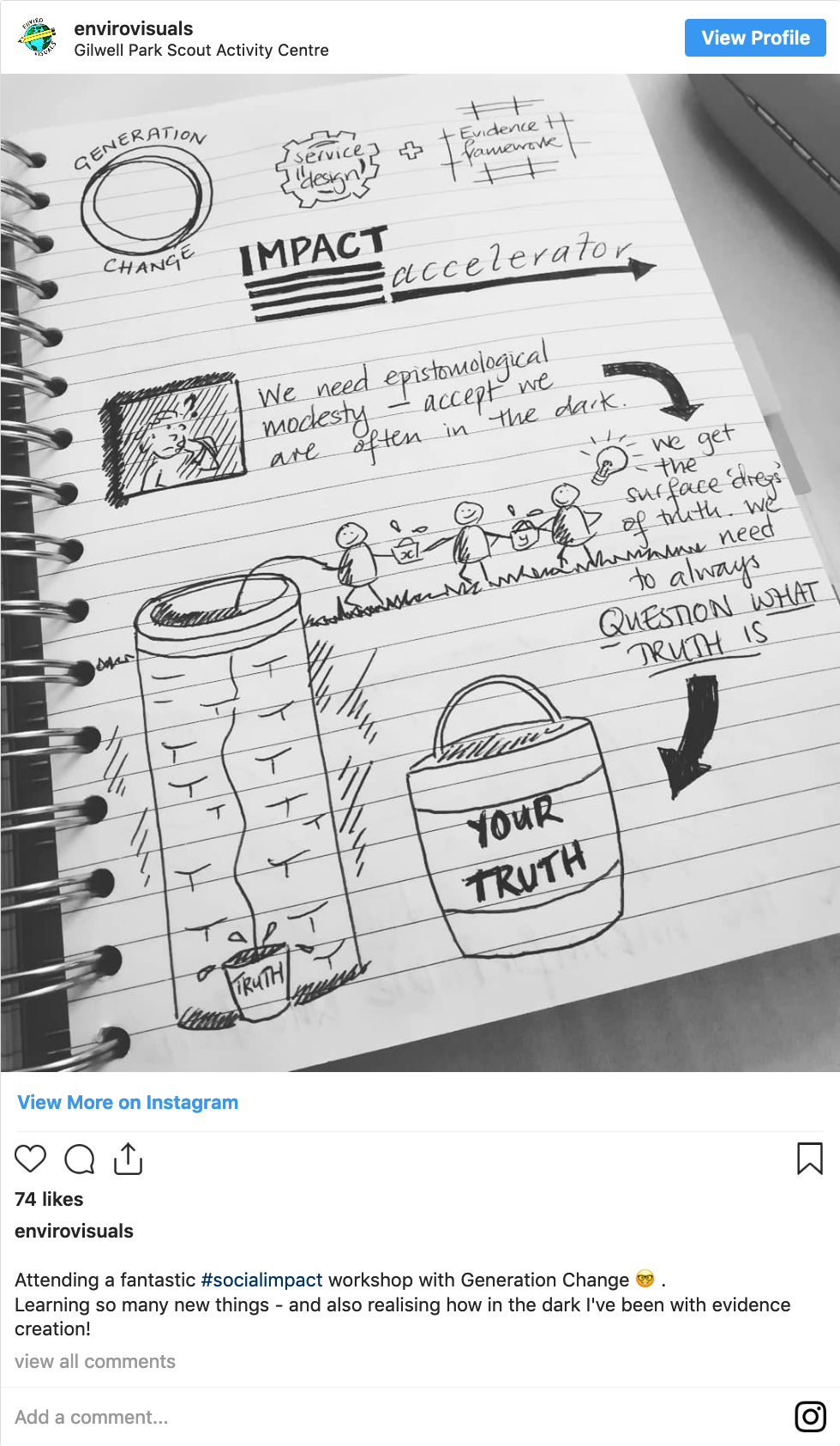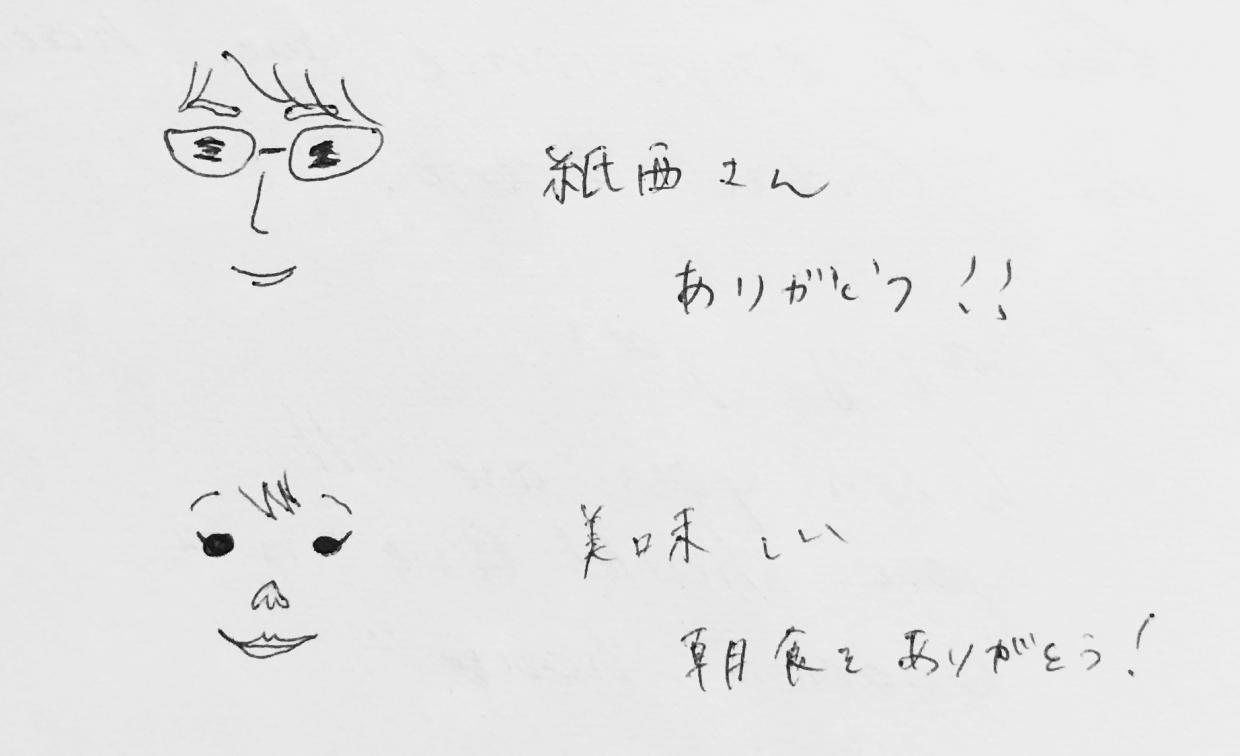
Just draw. AP Photo/Matt Dunham.
Today is a good day to start drawing. If you are, like most adults, insecure about your artistic skills, take heart. Drawing isn’t just about making art, but rather “a tool for learning above all else,” as D.B. Dowd explains in his book Stick Figures: Drawing as a Human Practice.
Putting pen to paper has many benefits. It develops the capacity for close observation, introspection, patience, and humility—vital attributes during a time when the chaos of politics and technology dominate our days. Drawing, sketching, doodling, diagraming, or whatever you call it, is also a useful problem-solving tool, because it helps one visualize ideas and hunches.
None of these benefits, however, necessarily makes staring at a blank page less daunting.
Here are five tactics to help get you into the habit of drawing.
Don’t Display Your Drawings
Learning to draw today first requires a mind shift. “The key to open up drawing for everyone is to set aside the aesthetic anxiety associated with ‘art,'” explains Dowd to Quartz. “The significance of drawing in human history is not artistic; it has to do with the acquisition, consolidation and transmission of human knowledge. Drawing is about learning. Draw to understand, to record, to synthesize, not to perform. Draw to learn.”
Sharing or even saving your doodles isn’t necessary. A drawing is an artifact of process, Dowd advises, not a performance, so we don’t need to be so precious with each chit of paper we scribble on. “I would not begrudge anybody showing their work, but ‘look at my excellent drawing!’ does reinforce drawing as performance, which is unfortunate,” he says.

Illustrator Saskia Wariner shares a similar sentiment on Medium.”Don’t show your drawings to anyone but your dog,” she writes. “I’ve found that when I [draw] by myself, I am more free, and a lot more good things happen when I am calm and relaxed. I feel less afraid of failing. I could just rip out some pages of my sketchbook if I want[ed] to, but honestly I’d rather never do that, because those are the most funny and interesting drawings.”
Distinct from artistic works, drawings also don’t need to be finished. Dowd says that one of the perils of digital drawing tools and software such as Adobe Photoshop and Illustrator has to do with “false finish.” “Because the display technology makes things look cool, they appear ‘finished’ when they’re not.” Draw for yourself, no one is looking.
Draw What’s In Front of You
Most basic art classes involve drawing a bowl of fruit. Sketching a still life can foster the muscle for quiet observation, focus, and form-making, and boost one’s confidence. But you don’t even need to scrounge around for an artful arrangement of bananas and apples: Any object within your grasp will do. My seat mate on a recent flight flight from Tokyo to New York, for instance, demonstrated this attitude brilliantly. Before tucking into each meal, she would pull out a sketch book and draw the objects that had arrived on her tray: cans of Asahi beer, a pack of rice crackers, tea poured in flimsy paper cups.

Still life. Photo from Reuters/Jason Reed.
Follow a Prompt
If you’re still stuck on finding a subject, follow the Inktober’s “prompt list.” Conceived every year by illustrator Jake Parker, the 31 words are meant to spark one’s imagination on each day of the month. Here’s this year’s Inktober list, available in French, Spanish, Portuguese, Dutch, German, Japanese, and Mandarin.

Sketch Your Meeting Notes
Next time you’re in a meeting, try “sketchnoting,” a method of visual note taking that involves recording salient points with small doodles and diagrams instead of words.
Some hardcore sketchnote practitioners arm themselves with special pens, markers, and blank notebooks. But don’t let the lack of fancy art materials stop you. Drawing can be done anytime, on any surface. Unless you aspire to be a professional notetaker, you don’t need to watch the videos or tutorials. Just unleash your thoughts and observations on paper.

Start Small
If you’re still finding drawing to be intimidating, start with something easy like drawing on a greeting card or sketching out a process diagram in a notebook, or even adding a small caricature of your face after your signature. “If you take a step back, and define drawing as symbolic mark-making, it’s obvious that all human beings draw,” Dowd says. “Diagrams, maps, doodles, smiley faces: these are all drawings!”

Face with a name. Illustration by Anne Quito/Quartz.